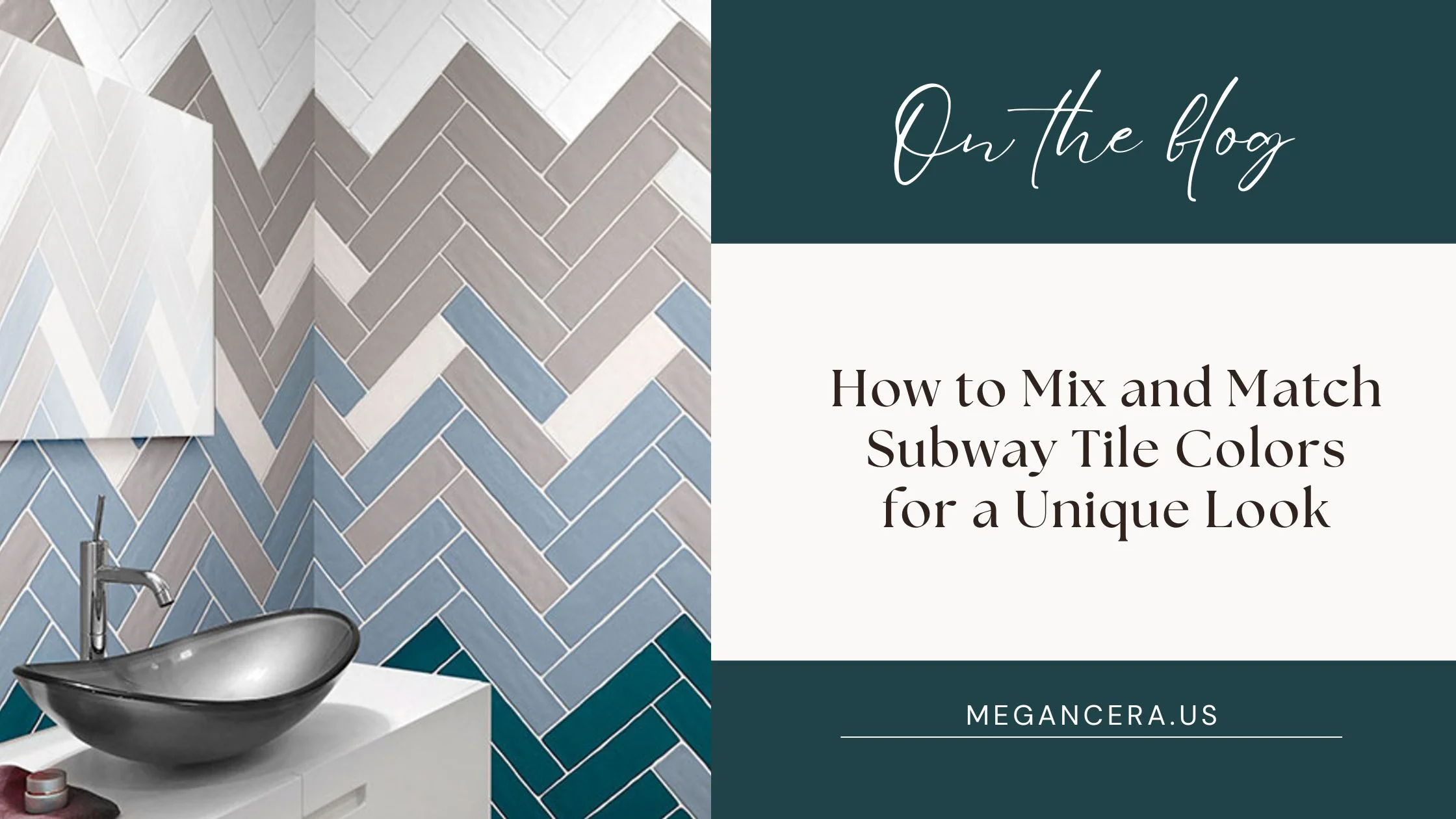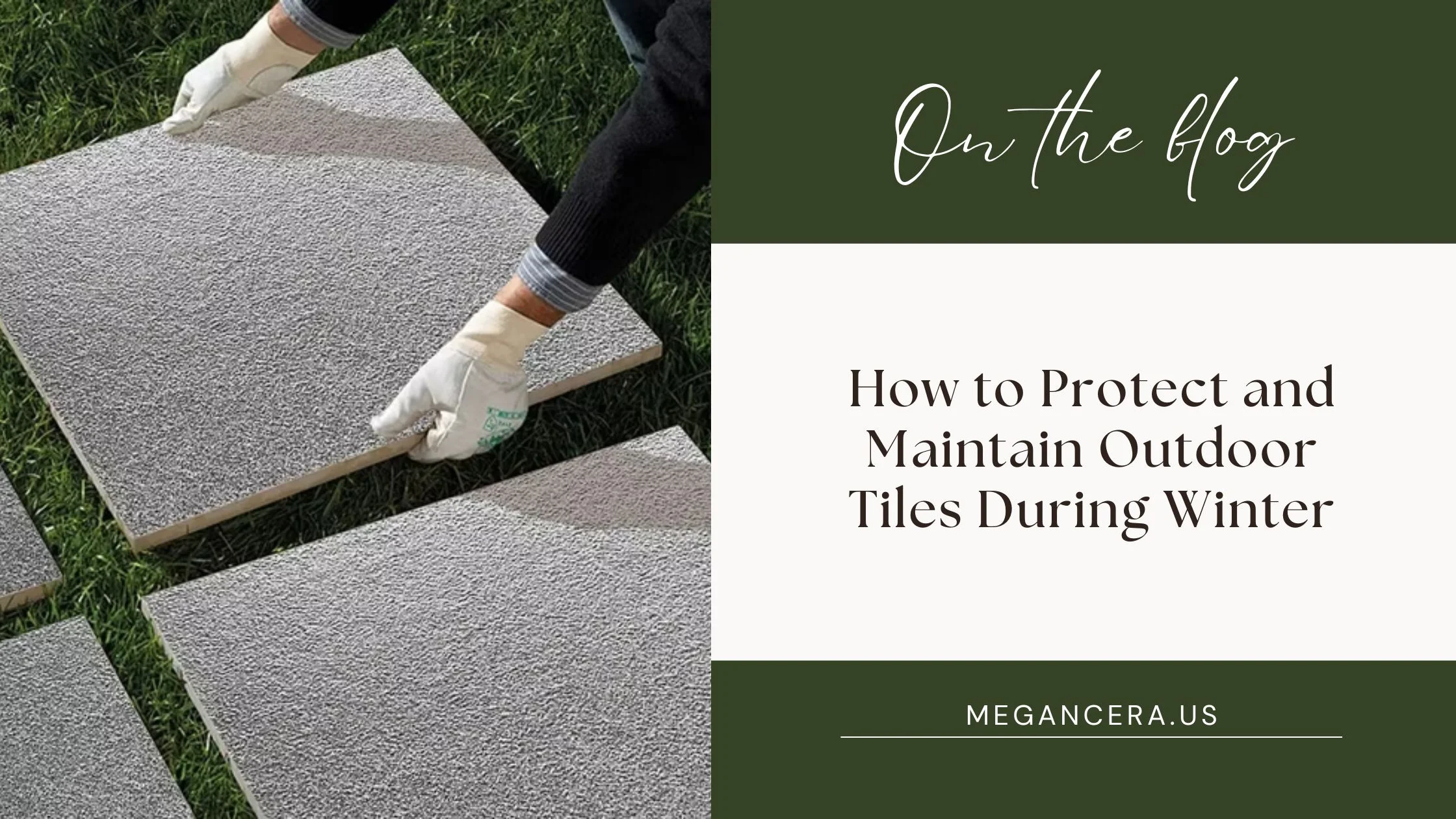Connect With Our Team
Blog: How to Mix and Match Subway Tile Colors for a Unique Look
Subway tiles have evolved from a plain yet elegant option for kitchens and bathrooms and much more. They have gradually devolved into ambidextrous object fixtures that can be made to conform to any style. The standard size, regular rectangular shape and smooth surface of subway tiles is suitable for practically any number of colour schemes, designs and arrangements. Subway tiles can therefore be arranged in a simple mosaic or placed in a complex pattern thus you can achieve a unique and desired look when designing your kitchen backsplash, your bathroom feature wall or an accent wall in your living area.
In this part of the blog let me take you through how you can use subway tiles and come up with an ideal color combination that will suit your home. These tips can help you decide on further colour schemes, choose some extra patterns or decide upon the finish that really appeals to your tastes and creates stunning design that matches the overall room look.
1. Consider Your Space and Style
Once you’ve settled on the general vibe for your room, you can begin to think about the specific color and layout choices that will bring your design to life.
While experimenting with various arrangements of subway tiles it is crucial to address other elements of the space where you are going to install it. The layout and choice of colours and patterns relates to those in the rest of the decor and furniture as well as the general colour scheme in the room.

-
Traditional Spaces: If, for example, you are planning an elaborate traditional kitchen or bathroom look you may want to explore traditional neutral colours. In such cases, you can still add little changes from White, creams, and lighter shades of gray color. The combination of the metallic and semi-gloss can give a contemporary look without completely losing the stuffy feel.
-
Modern Spaces: In the modern or contemporary interior, do not fear vibrant colors, complex and contrasting geometric shapes. When you select a color such as ink blue and add a golden tone into the equation, or even black subway tiles combined with white, you are sure to get the touch of the present day schemes.
-
Rustic or Industrial Spaces: For the traditional or shabby chic lighting of your home, then natural colors such as terracotta, moss green, and charcoal grey are good choices. When choosing an accent color or alternate color scheme, it is better to select a color that is different from beige but similar in brightness such as beige will be chosen as a neutral color and the worst color will be chosen as the main color or accent in the space.
Only once you have determined the general ambiance of your specific room can you start thinking of the particular shade and pattern that would be best for your design.
2. Choose Complementary Color Combinations
When choosing interlocking subway tile colors then it is very important to ensure that the colors chosen blend in with the rest of the decor in the room. This is where color theory comes in handy since the principles give the on how to pick good colors on the palate. Below are some popular color combinations you can consider:
Monochromatic Schemes
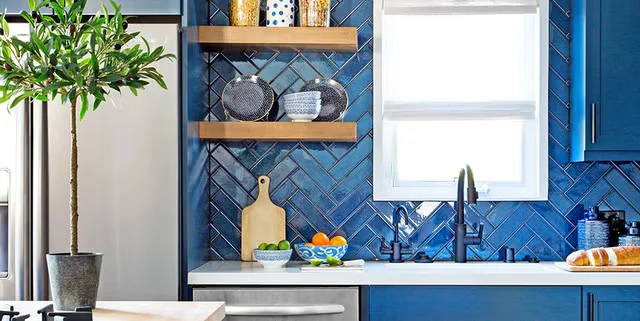
One of the simplest patterns of combining subway tiles is when a particular colour of the tile is used in different shades. This monochromic outlook is best suitable for those that love quiet, calm interiors while still introducing some level of dimension and tactileness. One can choose the light, medium and the dark shade of a particular color to get the best visual design of the product.
-
Shades of Blue: Pale/soft white or light grey subway tiles complement navy or deep teal shades well, the colours of the ocean. This can be especially startling in washrooms where finishes of such woods can produce the feeling of a spa.
-
Shades of Gray: Light gray subway tiles used in combination with charcoal or slate gray can look elegant and very contemporary. This type of finish is very versatile and can be effectively applied both in the kitchen and in the bathroom, and that it can easily match with some other finishes, e.g. black finish of certain appliances or stainless steel.
Contrasting Colors

If you are trying to make your subway tile design even more vibrant, you can check out how applying contrasting colors could bring more difference to your tiles. Overlapping two shades with the hues that are on different sides of the color wheel – blue and orange, red and green, black and white turning into an accent.
-
Navy and White: The choice of navy blue subway tiles and white details add a marine touch to the room yet look very contemporary. Such high contrast is good especially in areas such as the kitchen since they are likely to give the room a sharp outlook.
-
Black and Gold: If one is looking to add that extra panache, then black subway tiles should be installed with gold or brass fixtures. It is perfect for today’s home, modern or transitional, and creates an aura of escapism and glamour to any given area.
Neutral and Accent Colors
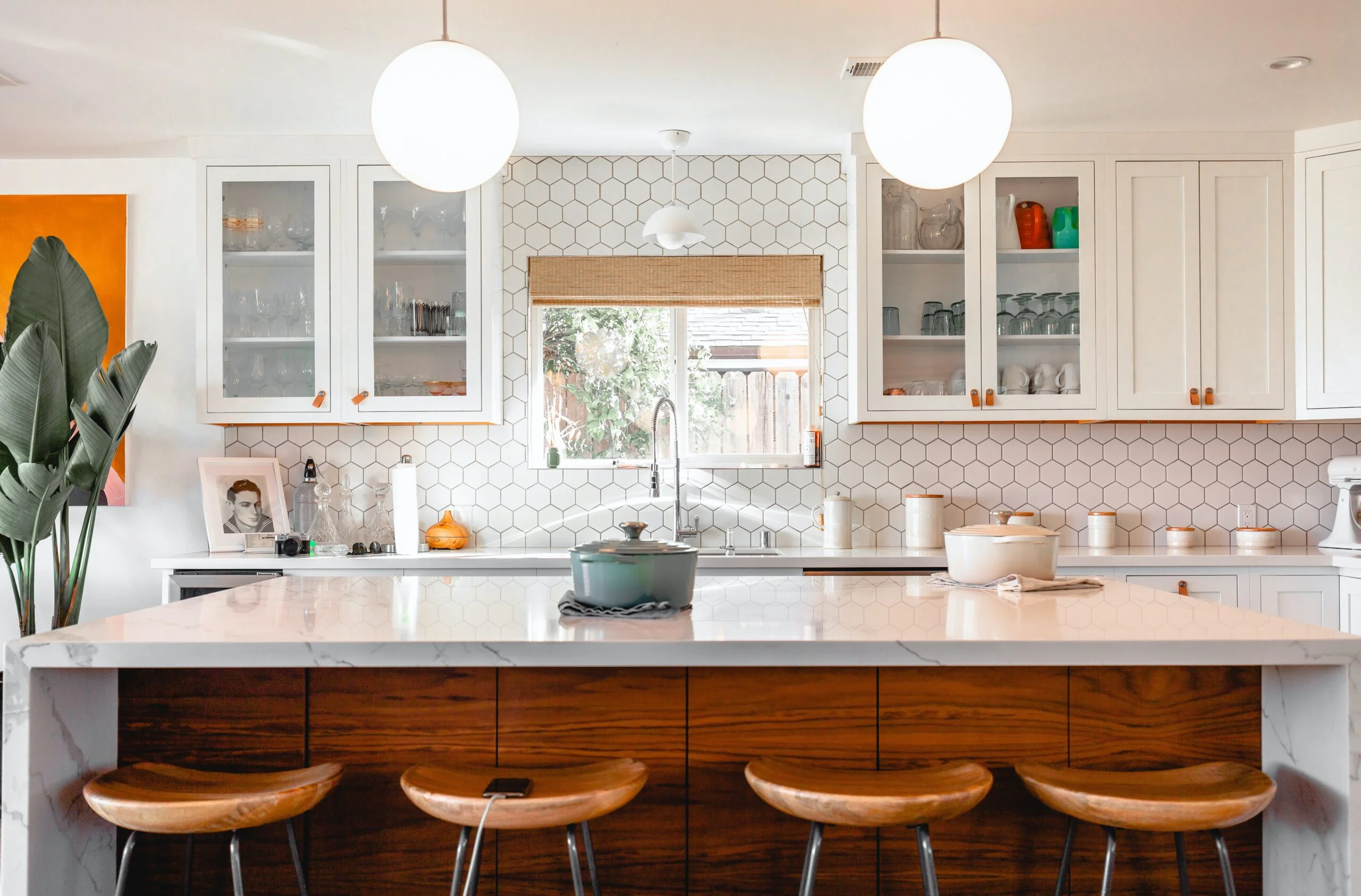
You can also select vibrant accent colors for your kitchen backsplash design because subway tiles- whether white, beige or light grey-would complement most colors. The space will be playful and modern, without overpowering a room with a bright color if solid accent tiles are in shades like turquoise, mustard yellow or coral.
-
Beige and Teal: White or beige subway tiles are calm and nondescript and teal or turquoise accent tiles can be exciting. It is ideal for developing a beach theme because remodelling a bathroom or kitchen can be an expensive task.
-
White and Mustard Yellow: Although white subway tiles will never go wrong, the use of mustard yellow tiles as the secondary tiles can give the decor an updated look. It is good for kitchens and bathrooms, making the environment warm and new at the same time.
Balance the Color Proportion
However, it is advisable to use certain proportions of colors mentioned above that can make your design beautiful. Follow the 70-20-10 rule: Design your kitchen tile using 70% base color for most of the surface, 20% for the second color, and the final 10% for the third and final color. Such a formula allows the design to be balanced and not filled up with too many accent products, keeping the overall harmony of the room. Actually, you can change the ratio to match your taste as they are all important but try to keep it proportional.
3. Experiment with Patterns
Beyond color, the pattern in which you arrange your subway tiles can also significantly affect the overall design. Subway tiles are rather plain, but variations can add some spice to your kitchen, if inspired. Here are some popular patterns to consider:
Classic Stacked Pattern
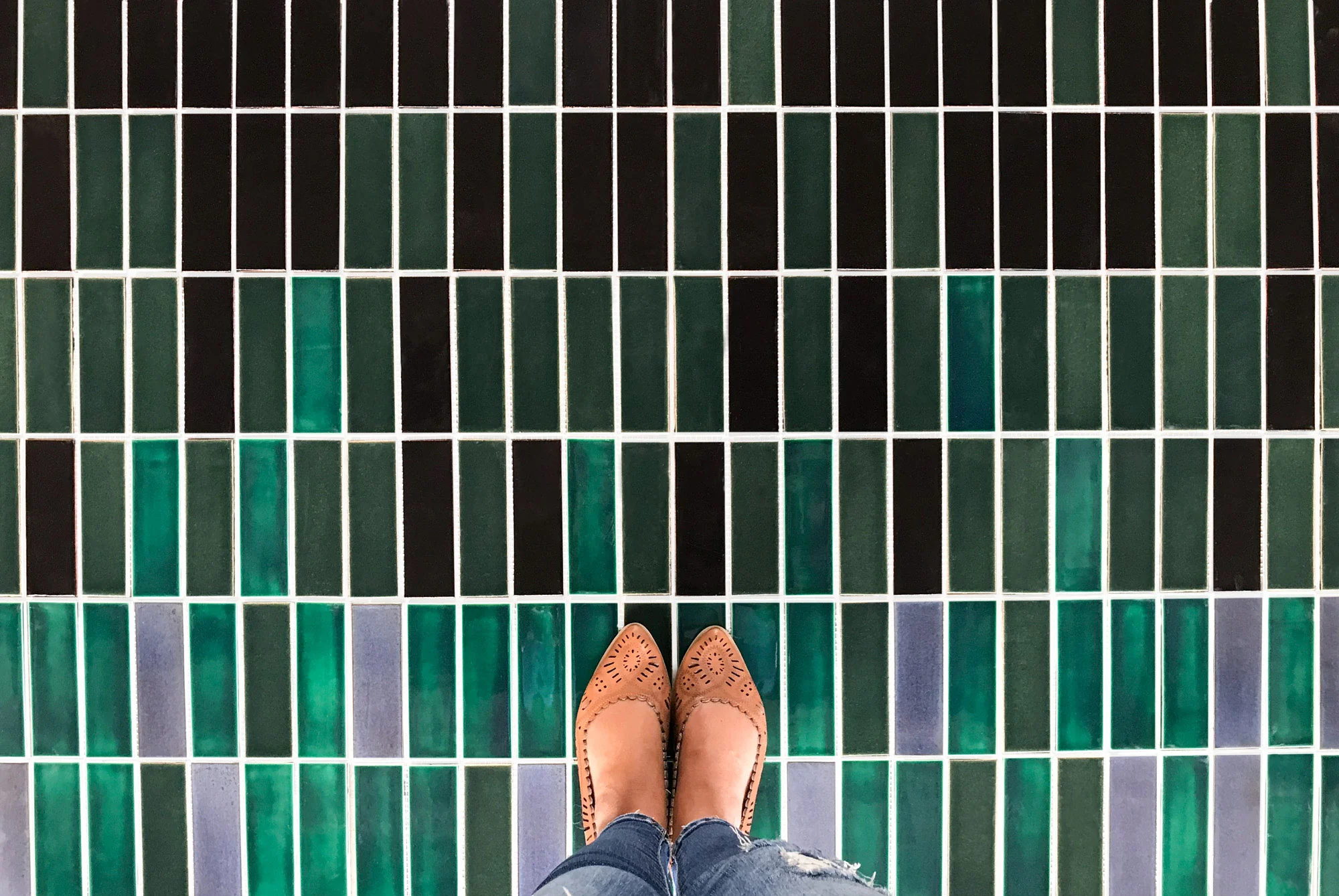
The stacked or grid pattern is said to be the oldest and simplest method when it comes to installing subway tiles. This forms a give an impression of a uniform and symmetrical structure which might be quite appealing in modern establishments. However, this pattern must be applied to plain, sharp, solid or even pastel color clothing Though it can also make a contrasting bold statement if applied to contradicting color pieces.
Herringbone Pattern
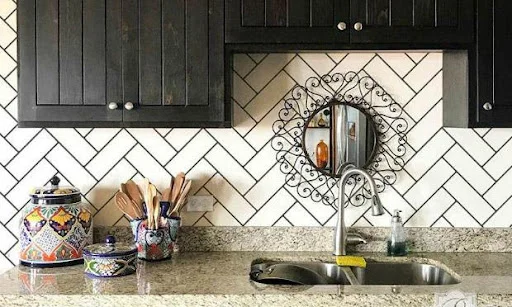
The second pattern is the herringbone pattern where you align the tiles in a form of V shape. This pattern creates dynamics and provides an improved view to the design. The herringbone can be a stunning effect constructed with disparate shades of the color selected continually or sequentially. For instance, white and gray subway tiles placed with herringbone pattern will provide an exquisite classic appearance.
Chevron Pattern
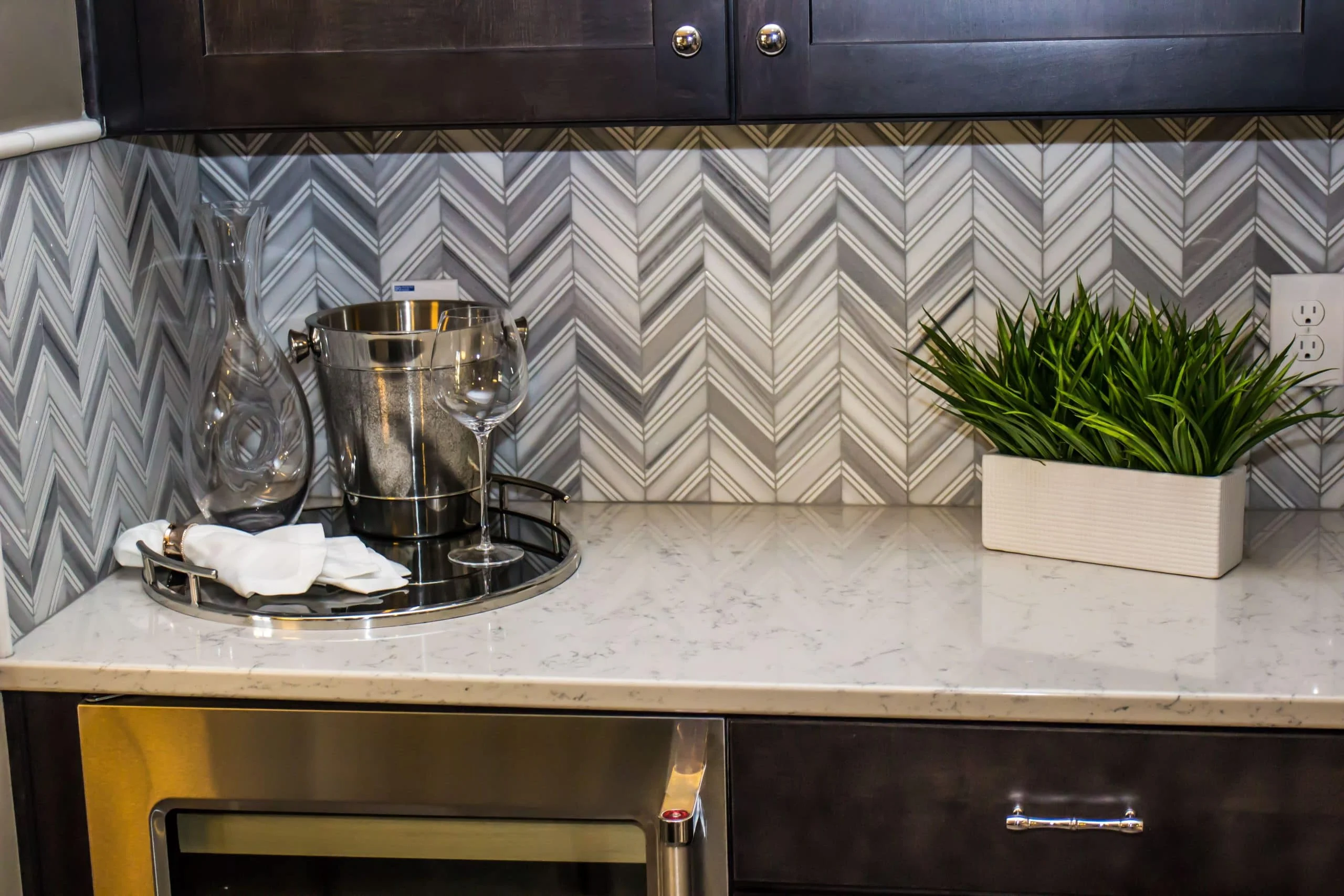
It consists of angled tiles like herringbone but here the rows are cut at the end with a sharp edge. This form of the pattern is perfect for making a statement in a room. For more dramatic effect it is good to be using two colours of the pattern on different rows one after the other. For instance, arranging two colors, particularly white and black, in chevron pattern makes the room such a gorgeous and contemporary appearance that will enhance the room.
Vertical or Diagonal Layout

Choosing between horizontal subway tiles is standard, but vertical or diagonal arrangements may be an excellent choice if you want to stand out. A vertical pattern layout will often seem to elongate the ceiling while a diagonal movement will seem to have more movement and energy to the room.
Try Two-Tone Combinations
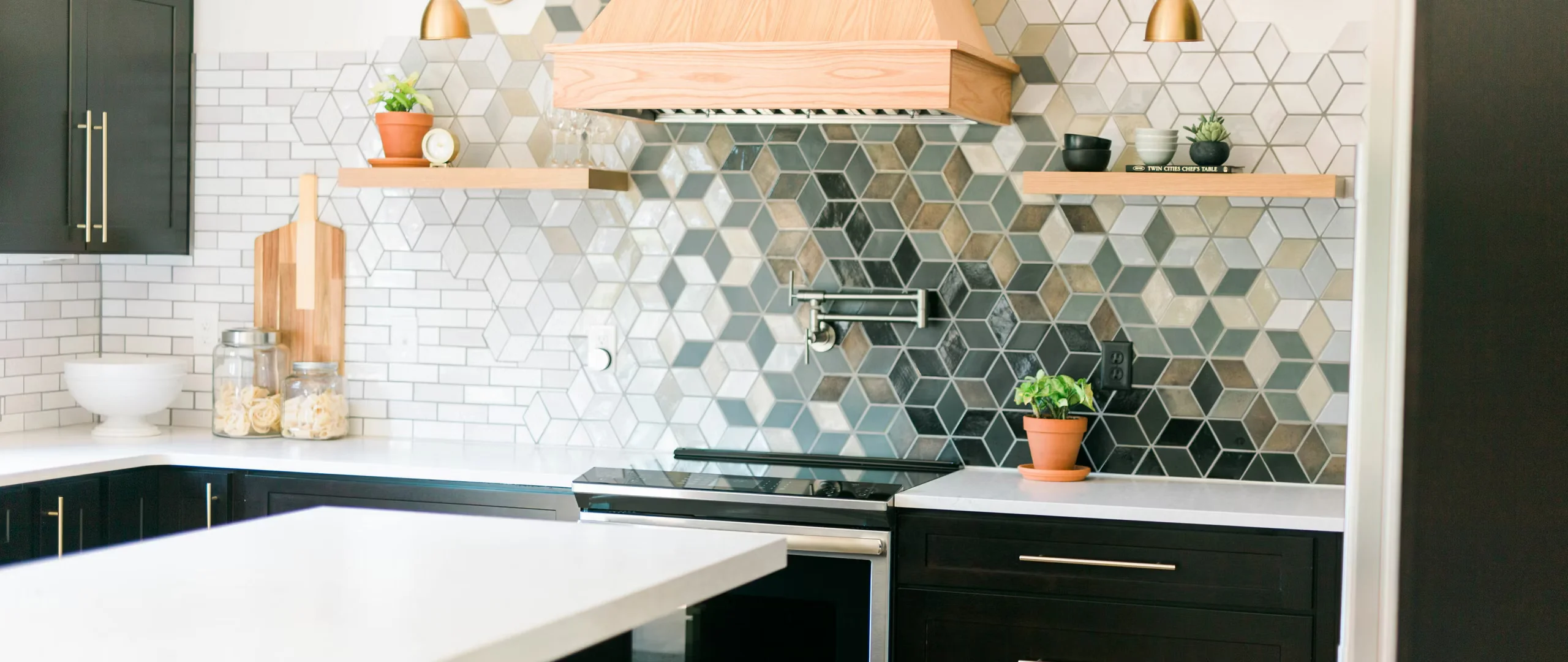
Two-color combinations are a way to combine two kinds of tiles that look quite simple and unpretentious. For instance, using two colours for every other row makes a neat, almost rigid, kind of design that conveys elegance and order. A third possibility, which is quite popular, is to emulate the hair-parted look with one color above the next on the wall. This technique works well in the kitchen or the bathroom since the darker part will take the stains while the top part gives the room a calm feel due to light color.
4. Mix Finishes for Added Texture
In case you are deciding on subway tiles and don’t mind a combination of various tiles, there is also the issue of the finish to consider. Glossy, Matt and textured finishes all offer a different look which is why when used together a design can appear fuller and more sophisticated.
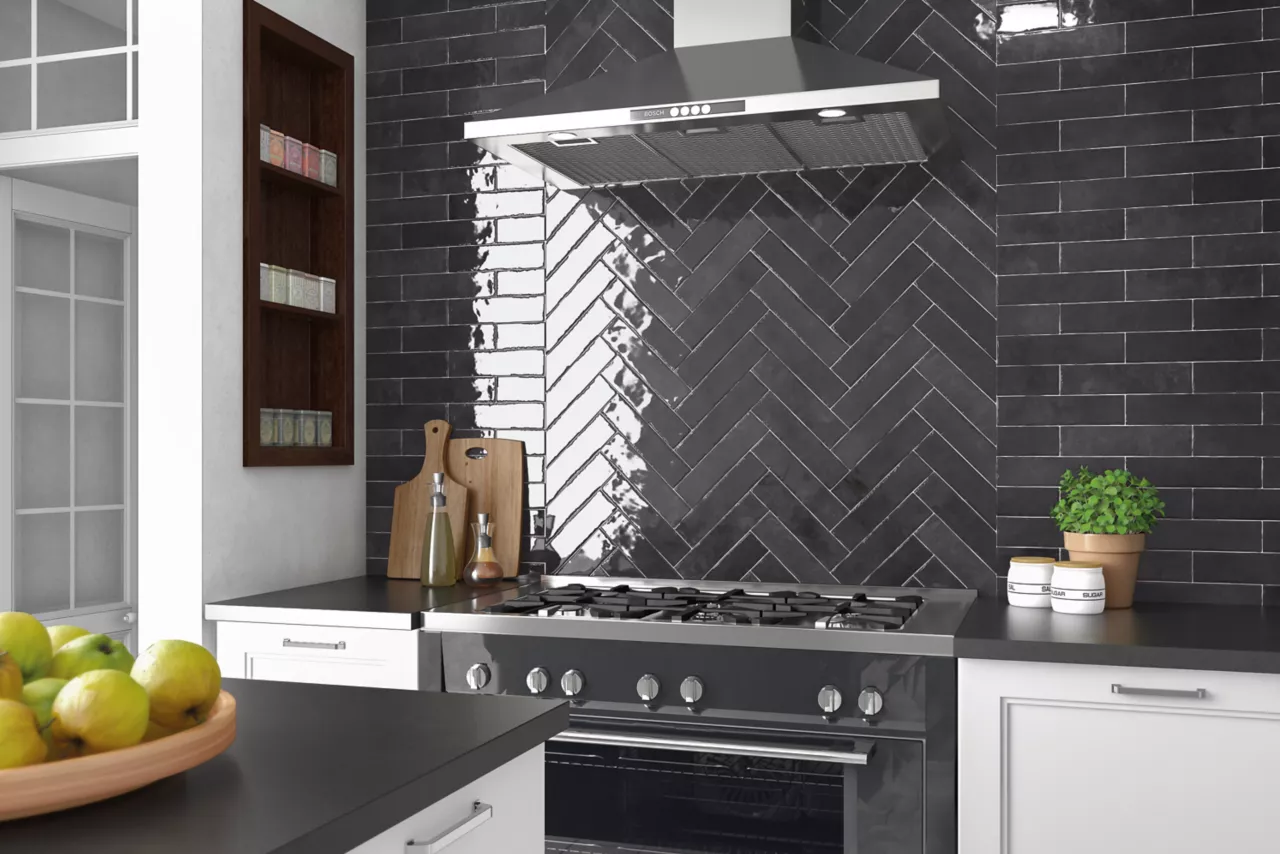
-
Glossy and Matt Finishes: Subway tiles and versatile choices; using matt tiles in conjunction with high-gloss subway tiles creates an interesting dimension when the latter are used in highlights. The smooth surface has a shiny coat that bounces light and makes tiles stand out due to contrast with the dull and sheen free texture of the matt tiles.
-
Textured Tiles: Of course, the option that deserves the most attention is textured subway tiles, which will add drive to the design. These tiles are available in different finishes, they may contain embossed patterns or even a 3D surface feel. Because the texture of both tiles is quite high it is best to pair a textured tile with a more smooth tile for added interest.
5. Consider Tile Size and Layout
Finally, it is also important to understand that size of the subway tiles is also a critical factor when it comes to the whole conception. Although the most popular size is 3 x 6 inches, you may use larger or smaller squares to achieve various results. Large tiles tend to make your space look more modern; while small-sized tiles provide more details and designs on the floor.
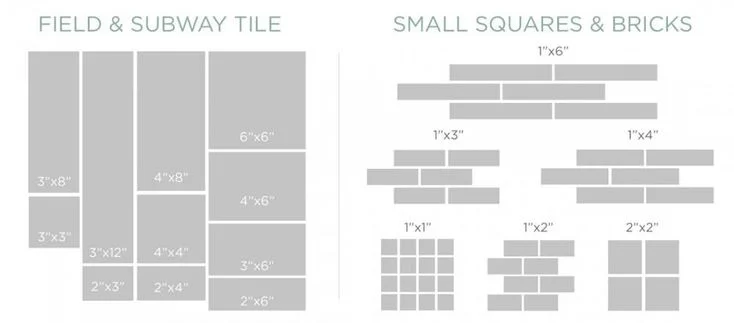
Popular subway tile sizes include:
-
75 x 300 mm: As it is the smallest size in subway tile, it’s best for smaller rooms to achieve the traditional simple and elegant design.
-
80 x 450 mm: The next one is a little bigger but is ideal for sealing large surfaces such as kitchen backsplash or unique walls.
-
100 x 500 mm: It is most effective for producing a cleaner and less cluttered appearance in both the kitchen and bath.
-
150 x 300 mm: An all-round size that can fit well into a classical or a modern design, which is not too big but not too small either.
-
150 x 600 mm: Bigger tiles such as this one creates a clean line and modern look and does not give a very crowded feeling due to the small grout lines.
-
200 x 200 mm: Good for small designs and complex designs of borders and other features of the backsplashes in the kitchens and bathrooms.
-
220 x 250 mm: These tiles are available in a slightly larger format and are perfect for large and grand projects that want to create a massive first impression while remaining sleek and modern.
Where to Buy Trendy Subway Tiles
When it comes to choosing subway tiles, you are already halfway there if you are here at Megan Cera because we have the most modern and fashionable subway tiles to offer for your project. Megan Cera as a dependable manufacturer and exporter delivers a wide category of subway tiles that are available in various colors, dimensions, surfaces and motifs. If you need your bathroom to be designed with clean white subway tiles or if you are up for something more daring with contrasting colors; Megan Cera is fully equipped to offer a plethora of choices for your dream bathroom designs.
It is possible to go through the exhaustive catalog of subway tile in various sizes including 75 x 300 mm, 80 x 450 mm, and 100 x 500 mm among others with a view of meeting the required tastes and design. As a company that is focused on the production of quality and innovative products, Megan Cera introduces tiles that have aesthetic and functional value for the sake of creating value of durability in your design.
If you want to know more about Megan Cera and where you can purchase the subway tiles you need for your home or commercial establishment, you can always check their website or get in touch with her team and she will recommend to you the best subway tiles that can transform any area and conceptualize your dream space.

